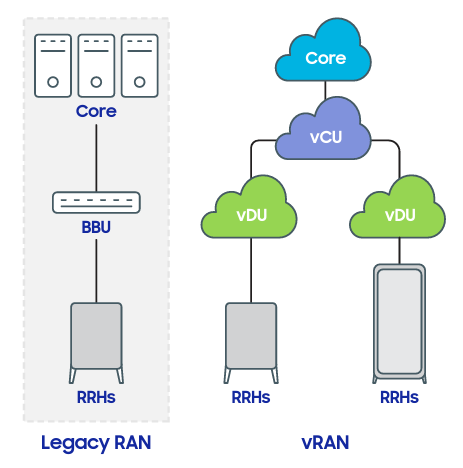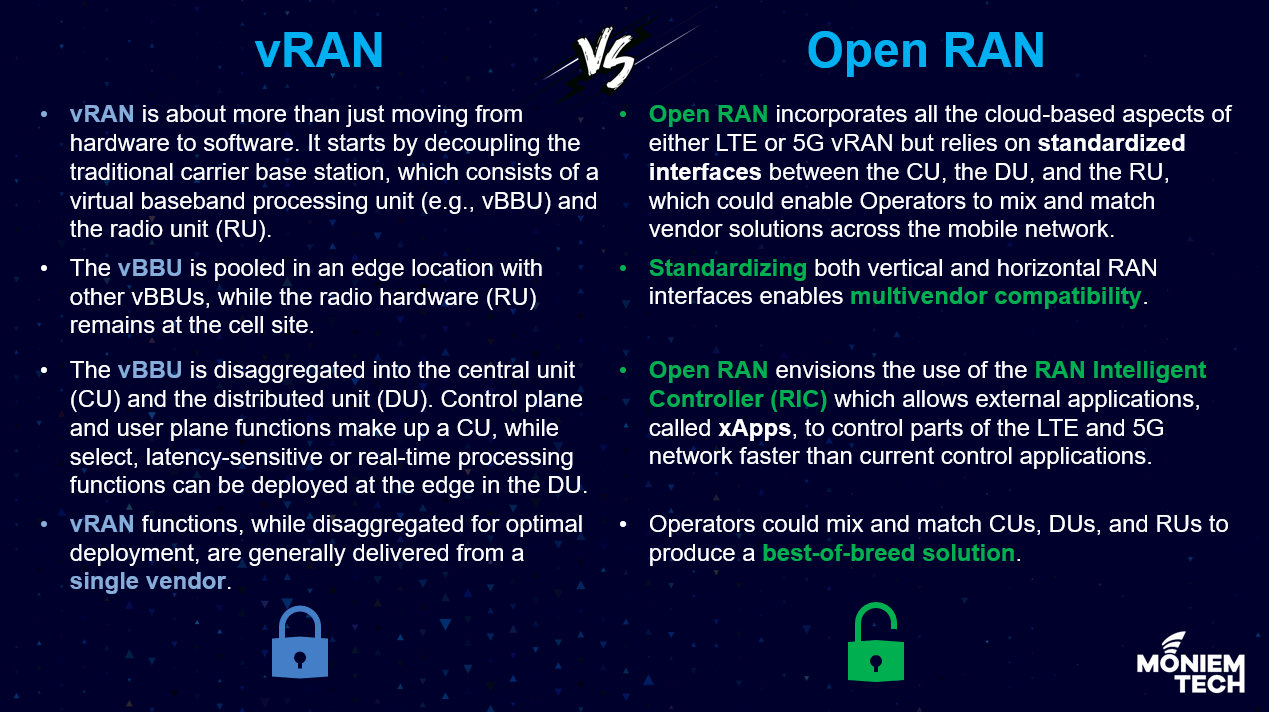Virtualization is a journey that the telecoms industry has been on for several years to transform network functions into virtual network functions (VNFs). The VNF software is then decoupled from the purpose-built hardware and run on standardized, common off-the-shelf (COTS) hardware. The interfaces between each component in such a setup may still be closed or proprietary.
vRAN transforms the RAN from hardware-specific to software-based run on general-purpose servers. It is the evolution from vendor-specific, purpose-built baseband technologies to general-purpose platforms run by software.
In legacy RAN systems, each cell site had a Baseband Unit (BBU), which sent data to and from the site’s Radio Units (RUs) and the core network. The BBU was a proprietary piece of hardware of fixed capacity.

Disaggregating the functionality of the BBU provides multiple benefits to operators, which has led the industry to develop vRAN, replacing the custom-built BBU with software-based components.
vRAN uses the centralization concept by shifting from dedicated DU and CU hardware to vDU and vCU on COTS hardware. The software solution runs on commercial-off-the-shelf (COTS) x86 servers, which are used as general-purpose processors, allowing operators to pick vendor-agnostic servers and platforms. By using these generic COTS servers, when upgrading to higher capacity servers, the existing servers can be redeployed for use in running other applications such as Core, Multi-access Edge Computing (MEC), and IT applications.
Other operational advantages of vRAN come with the fact that hardware accelerators can easily plug in without replacing the hardware. Thus, there’s no need to purchase or replace the existing server. By combining all of these benefits, vRAN reduces the total cost of ownership for the operator.
What about Open RAN?
On the other hand, Open RAN refers to the standards used to create more open internal interfaces and define a particular architecture for disaggregation, virtualization, and automation, to introduce new capabilities and help integrate new vendors into the supply chain. This is particularly relevant for the RAN given that its disaggregation into separate hardware and software has proven to be far more challenging than that for other network domain elements, such as the packet core.

